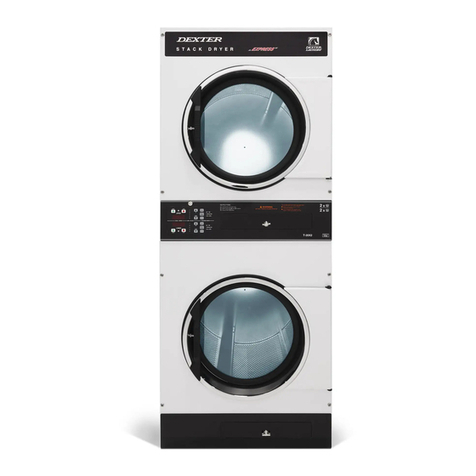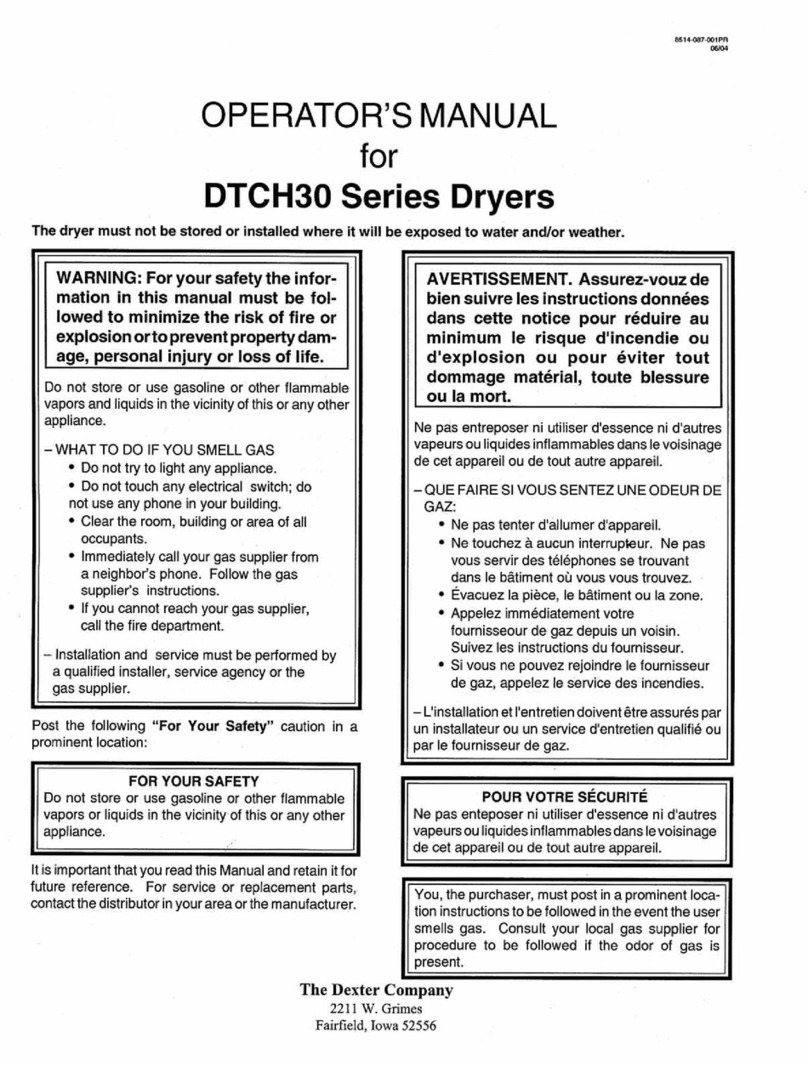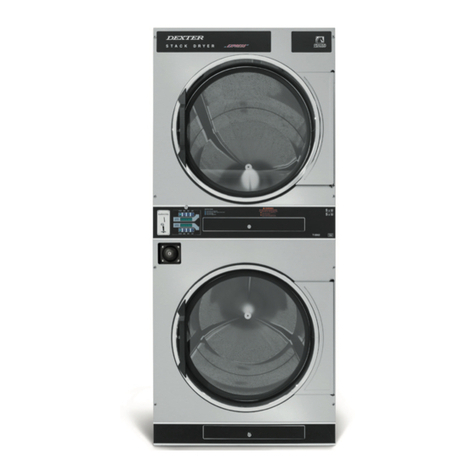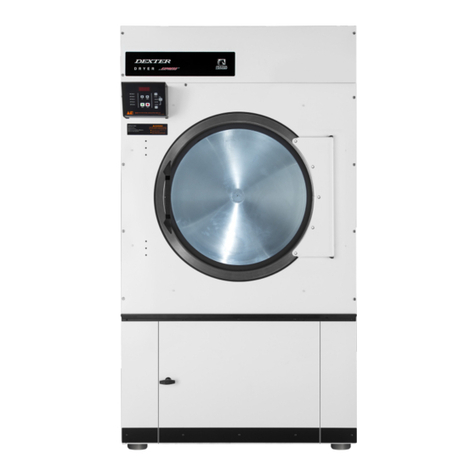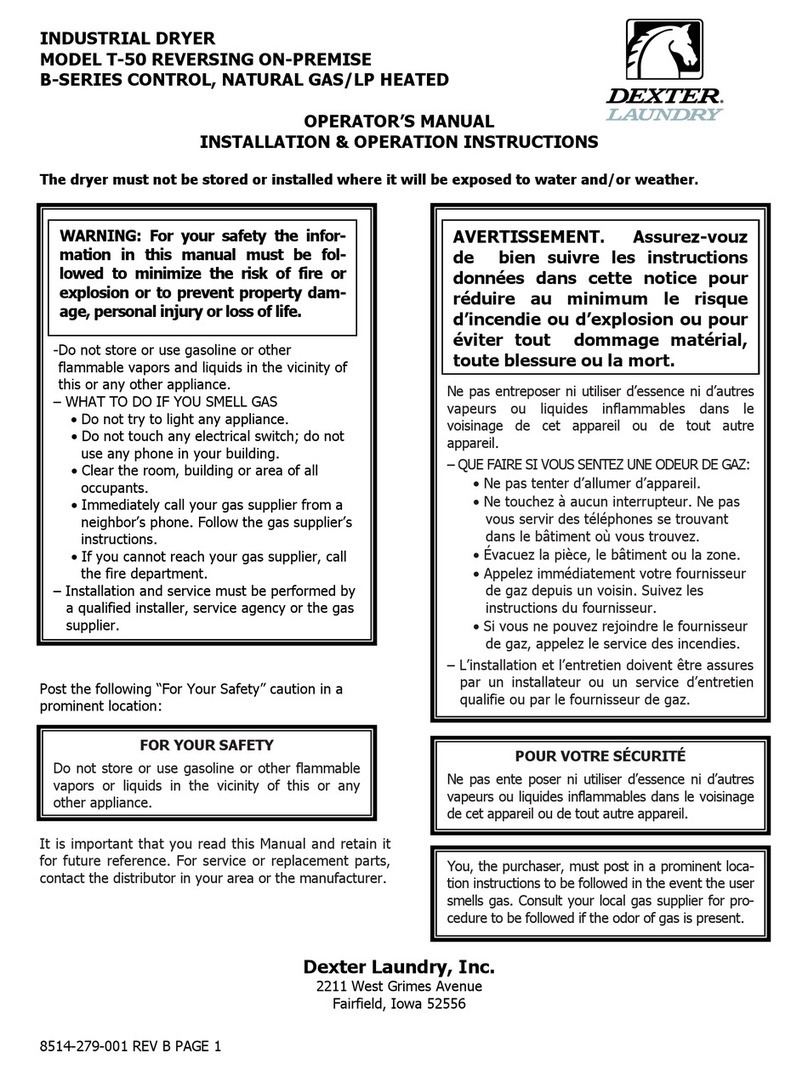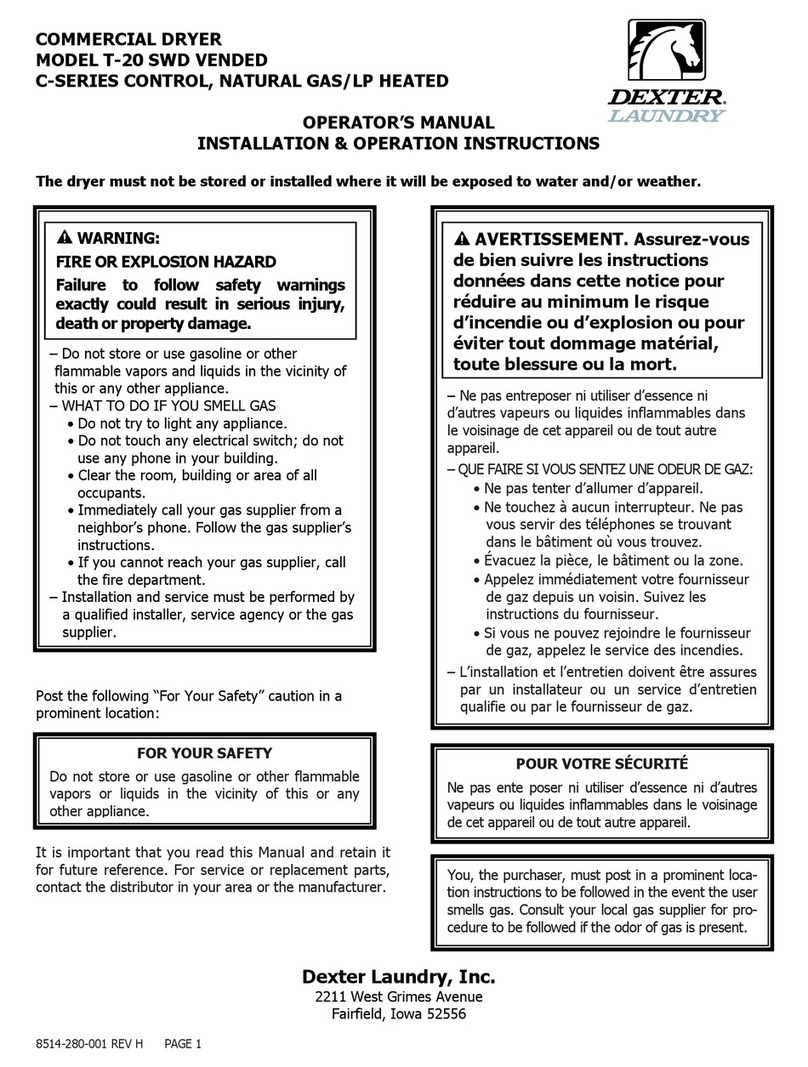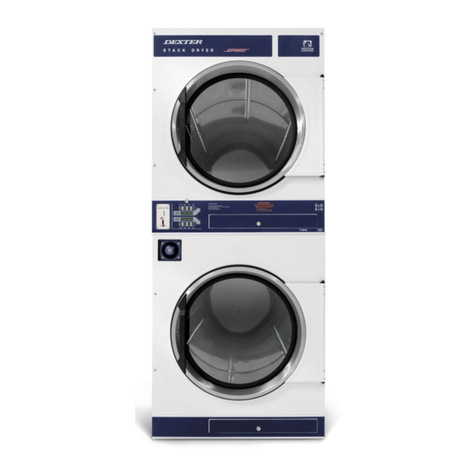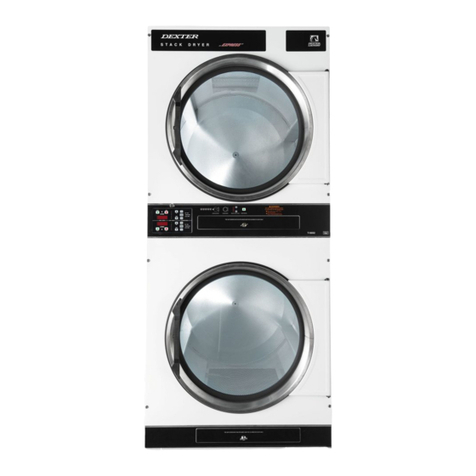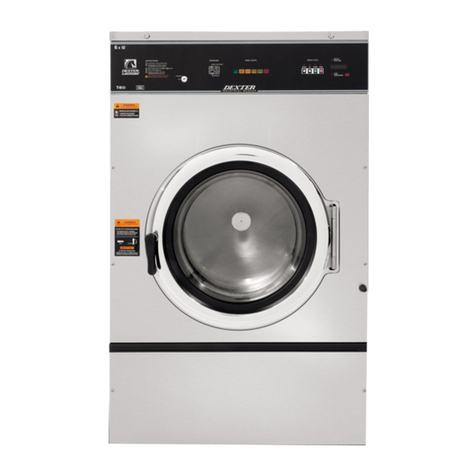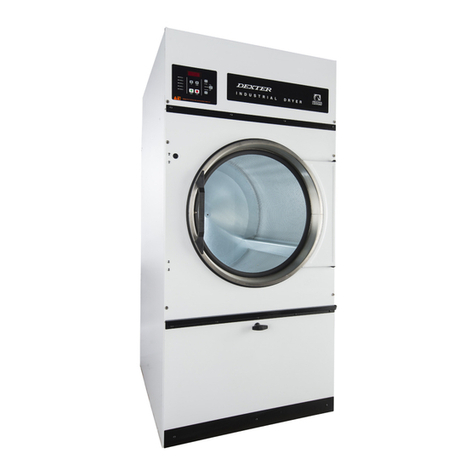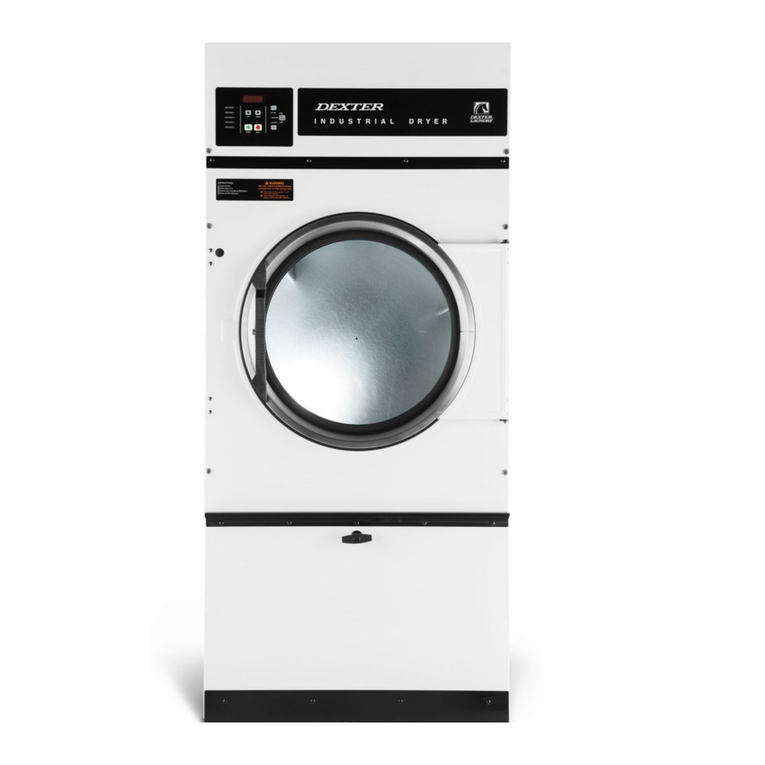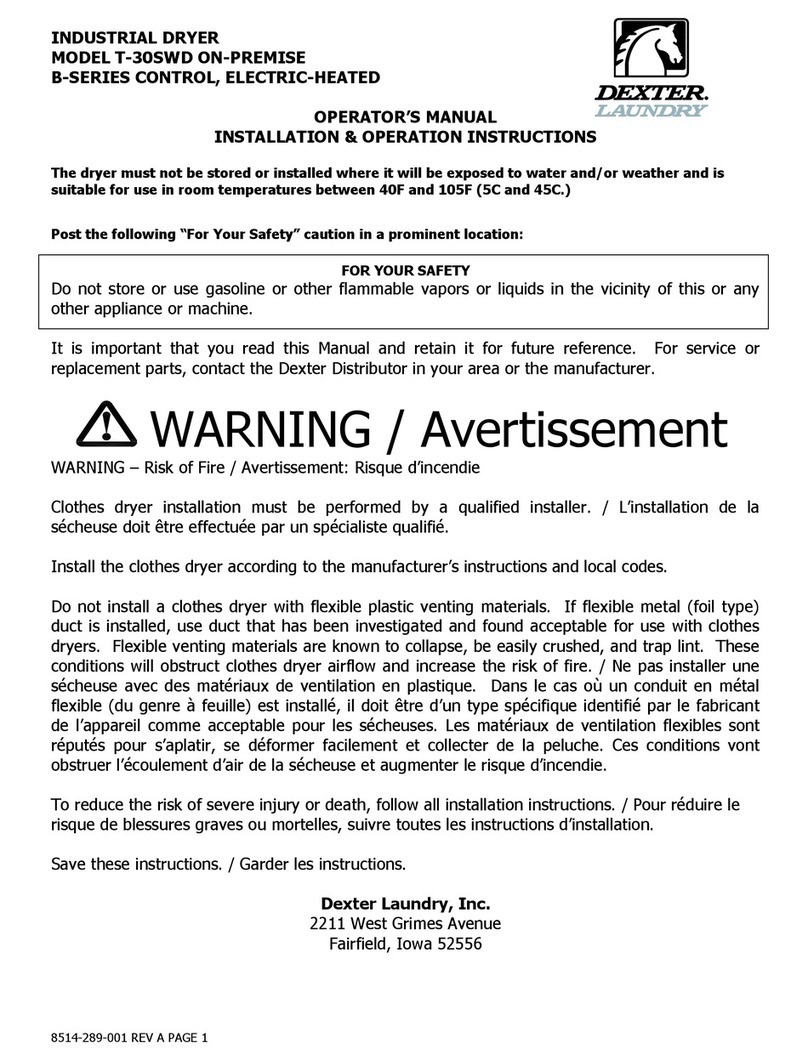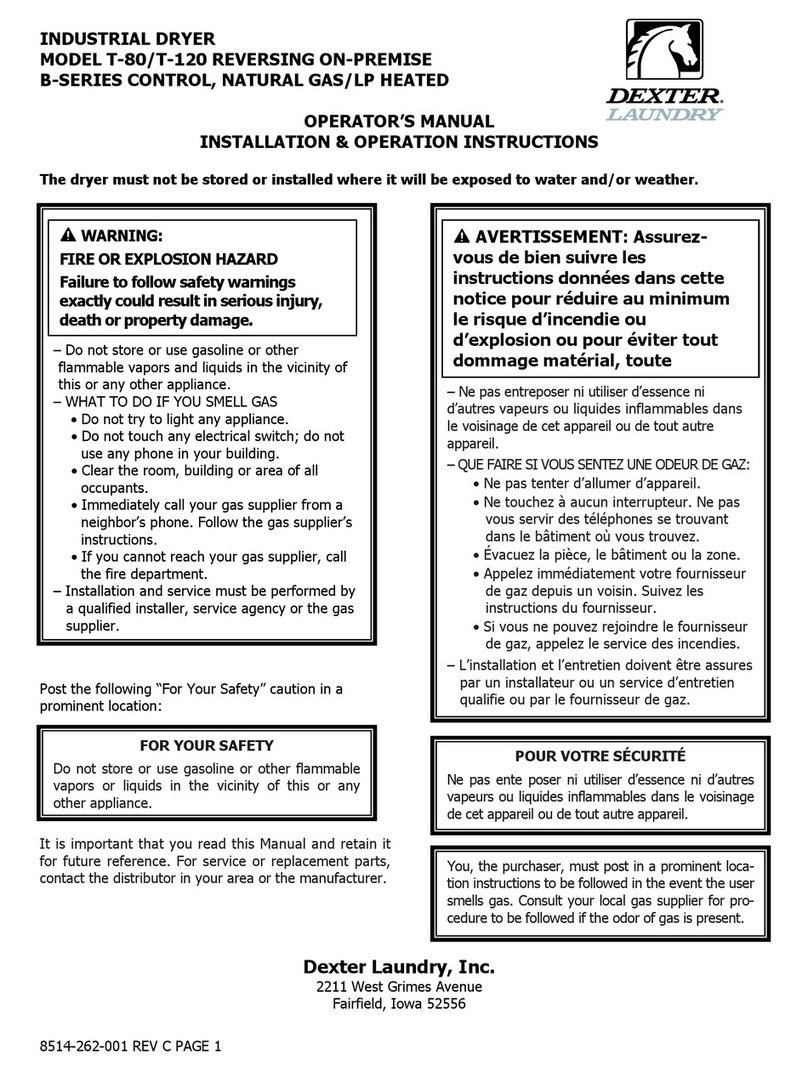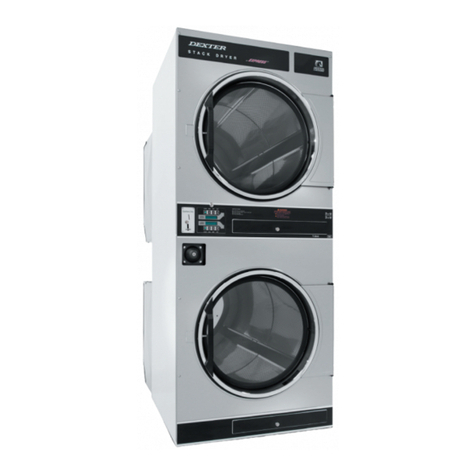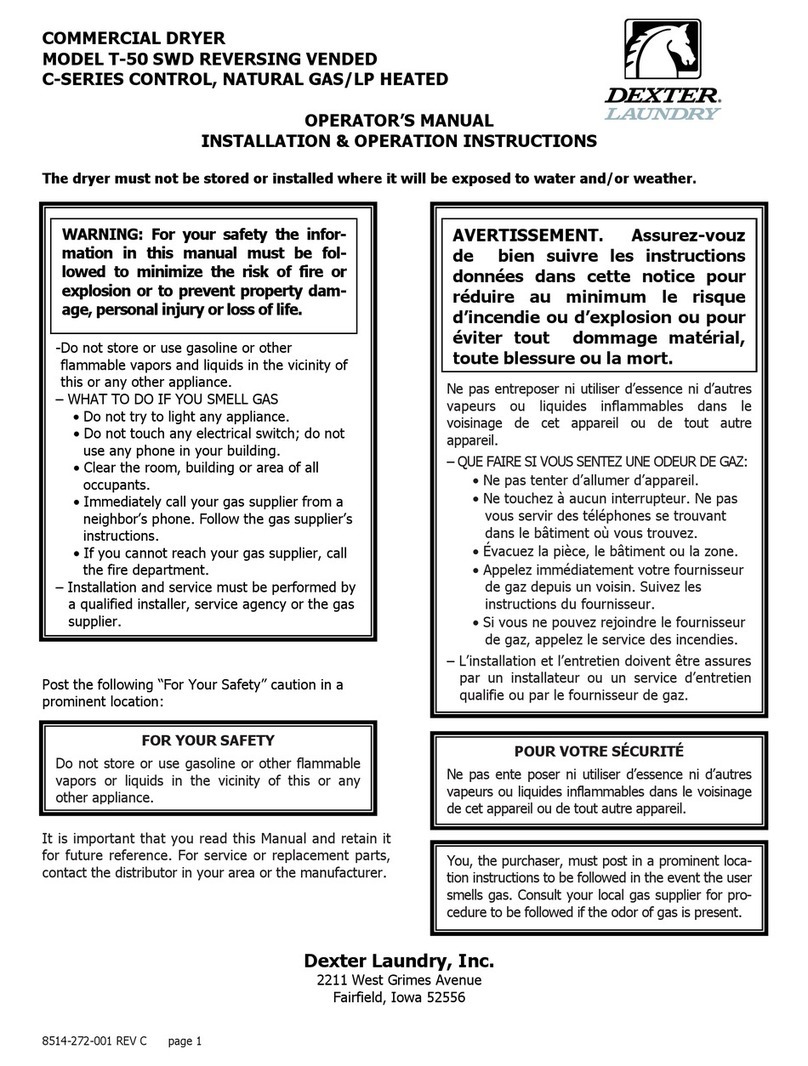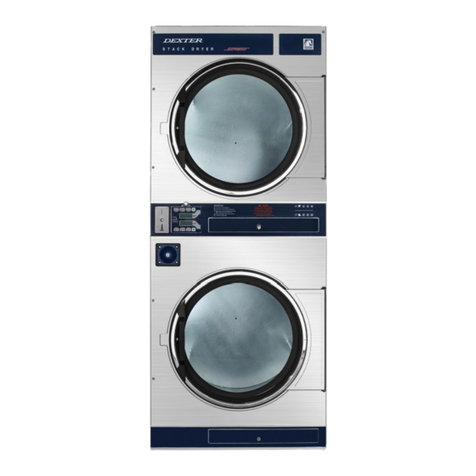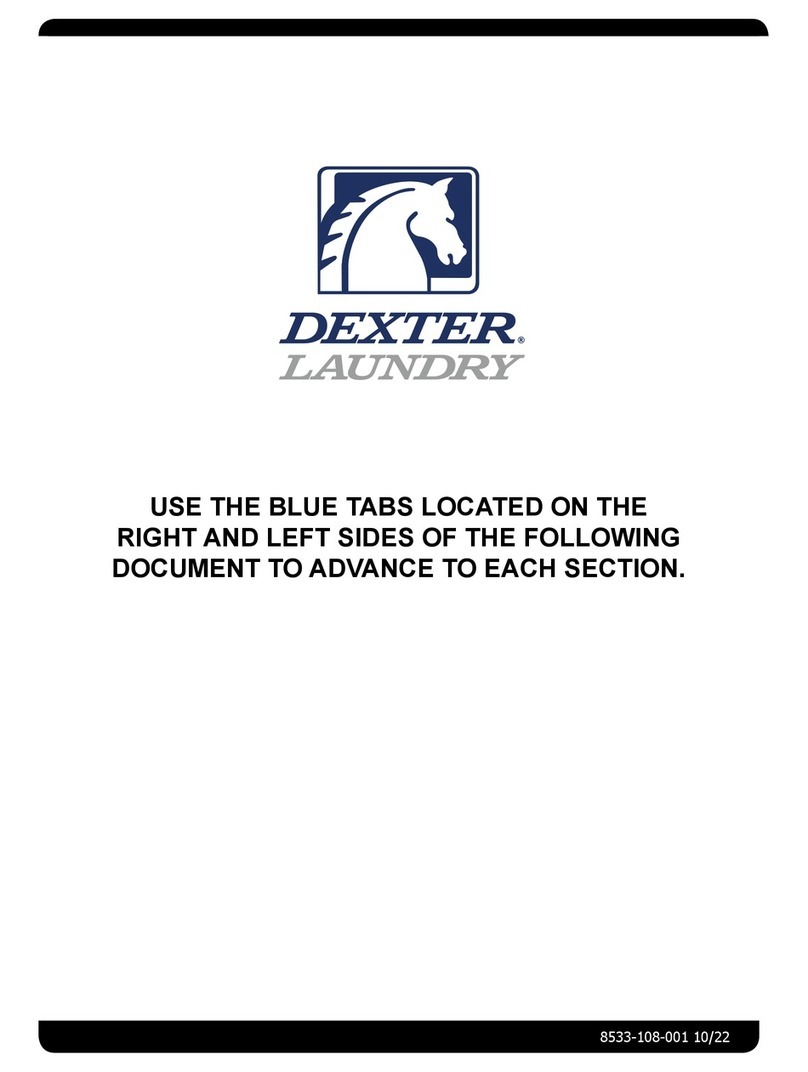
8
CAUTION: The dryer and its individual shutoff valve ust be disconnected fro the gas supply
piping syste during any pressure testing of that syste at test pressures in excess of ½ psig
(35 bar). The dryer ust be isolated fro the gas supply piping syste by closing its individual
anual shutoff valve during any pressure testing of the gas supply piping syste at test pressures
equal to or less than ½ psig (35 bar).
6. EXHAUST INSTALLATION. (Refer to Figure 3 at the end of section 6.) Exhausting of the
dryer(s) should be planned and constructed so that no air restrictions occur. Any restriction due to
pipe size or type of installation can cause slow drying ti e, excessive heat, and lint in the roo .
Fro an operational standpoint, incorrect or inadequate exhausting can cause a cycling of the
high li it ther ostat, which shuts off the ain burners and results in inefficient drying.
Individual exhausting of the dryers is reco ended. All heat, oisture, and lint should be
exhausted outside by attaching a pipe of the proper dia eter to the dryer adapter collars and
extending it out through an outside wall. This pipe ust be very s ooth on the inside, as rough
surfaces tend to collect lint, which will eventually clog the duct and prevent the dryer fro
exhausting properly. All elbows ust be s ooth on the inside. All joints ust be ade so the
exhaust end of one pipe is inside the next one downstrea . The addition of an exhaust pipe tends
to reduce the a ount of air the blower can exhaust. This does not affect the dryer operation if
held within practical li its. For the ost efficient operation, it is reco ended that no ore than
14 ft. (4.25 ) of straight 6 in. (152 ) dia eter pipe with two right angle elbows be used for
each cylinder.
If the exhaust pipe passes through a wall, a etal sleeve of slightly larger dia eter should be set
in the wall and the exhaust pipe passed through this sleeve. This practice is required by so e
local codes and is reco ended in all cases to protect the wall.
This type of installation should have a eans provided to prevent rain and high winds fro
entering the exhaust when the dryer is not in use. A hood with a hinged da per can be used for
this purpose. Another ethod would be to point the outlet end of the pipe downward to prevent
entrance of wind and rain. In either case, the outlet should be kept clear, by at least 24 in. (610
) of any objects, which would cause air restriction.
Provide a screen or grill over the ter ination of the exhaust or flue outlet such as will prevent the
entry of a ball of 5/8 (16 ) in dia eter while the achine is not operating but will allow entry
of a ball 1/4 (6 ) in dia eter while operating.
When exhausting a dryer straight up through a roof, the overall length of the duct has the sa e
li its as exhausting through a wall. A rain cap ust be placed on top of the exhaust and ust be
of such a type as to be free fro clogging. The type using a cone shaped “roof” over the pipe is
suitable for this application.
Exhausting the dryer into a chi ney or under a building is not per itted. In either case there is a
danger of lint buildup, which can be highly co bustible.
